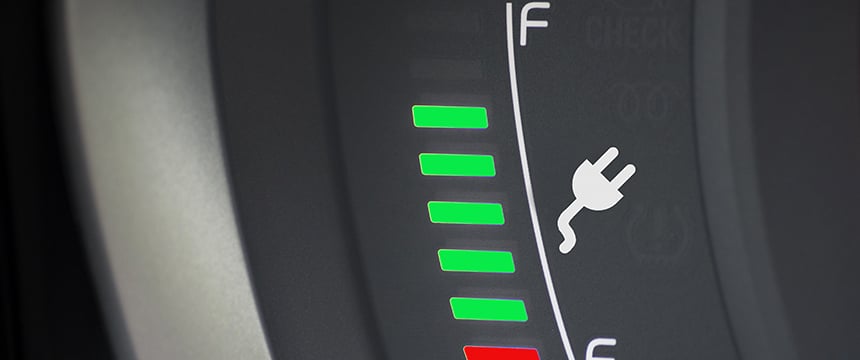Electrifying a Fleet Presents Opportunities for Local Grid Stability and Revenue for Fleet Owners

In our March 15 article, EV Buses: Arriving Now and Here to Stay, we discussed the opportunities being created when fleet operators shift powertrains from internal combustion engines (ICE) to electric vehicle engines (EV). With reduced maintenance costs, government subsidization, and vehicles predicted to operate more reliably than current fossil fuel consuming alternatives, the case for switching fleet operations from ICE to EV seems to sell itself, in theory. When you look at an EV, it’s more than just a hunk of metal, rubber, and fuel – it’s all of that and an extremely large battery pack with tremendous amounts of potential energy stored within. Is there the potential to harness a large collection of battery packs for energy storage banks, grid demand normalization, and backup-battery services? The answer is a resounding “yes!”
For many, an ICE vehicle serves a wonderful purpose while in use. They’re reliable, fuel is abundant, and they are great at moving people and goods at low cost over long distances. But, ICE fleets don’t provide any services when they are sitting idle. When not in use, they act as cost centers, not accretive to the bottom line. They don’t offer supplemental income when not in use and you can’t really rent out your bus fleet overnight without risking availability for the morning route. In fact, the average school bus is in use approximately six hours a day, 200 days annually, and are otherwise parked or idled when not in operation (which is particularly true during summer months). During the summer, when demand for electricity is often at its highest), clean energy stored in idled electric school buses can provide an energy resource to the grid that traditional ICE vehicles can’t provide.
EVs, on the other hand, can be something else entirely; their collection of battery packs are capable of repetitively collecting, storing, and discharging energy. The energy they store can come from a variety of sources such as renewable, nuclear, and even traditional fossil fuel sources. With no limitations on their source of power for storage, it’s the battery packs in these EVs that are key. Modern battery systems are capable of charging and discharging without prohibitive degradation. The potential energy stored within, and the ability to consistently replace it, can be harnessed to stabilize the grid when energy supply and demand are volatile, to act as a backup power supply when the grid goes down, as a mobile power supply source, or to store energy and sell back to the grid when electric prices are more favorable. This usage underpins the concepts of Vehicle-2-Grid (V2G) and the microgrid application for EVs.
Vehicle-2-Grid is the process of allowing power to flow in both directions for electric vehicles, from the grid to the vehicle and from the vehicle to the grid, when needed. The U.S. Department of Energy defines a microgrid as ”a group of interconnected loads and distributed energy resources within clearly defined electrical boundaries that acts as a single controllable entity with respect to the grid.” Microgrids often have a form of energy generation (such as localized renewable or fossil fuel generation systems), load, and storage (like a fleet of EV buses), all locally defined within a boundary, and typically controlled by a microgrid controller. In the framework of a microgrid, V2G technology fills the void required to be filled by a home or community battery backup or energy storage unit. Rather than large, single use battery banks – capable of only storing and discharging electricity – the integration of V2G technology into the microgrid provides a multifaceted use for the battery bank. With V2G, you have a primary usage as transportation fleet, and energy storage in the form of batteries when transportation services are not needed.
Vehicle-2-Grid and microgrids are a match made in heaven, with idle EVs being used as storage banks for surplus power, and that power being transferred back to the grid when the opportunity or need arises. In current applications, these storage banks take the form of large battery packs stored in isolation (such as Tesla’s Megapack in Australia). And, of course, there are some instances of vehicles being used to power homes in recent natural disasters (such as the new Ford Lightning). These two applications are merged and put into use in V2G technology and microgrid systems, with the fleet vehicles serving the dual purposes of both the Megapack and Lightning.
While this may all seem merely theoretical, V2G and the microgrid process has already seen real-world applications in the White Plains, NY and Beverly, Mass. school districts. In December 2020, the White Plains district’s five EV buses started selling excess power stored on their bus battery packs back to Con Edison, the community’s local energy provider. According to news reports, “[t]he buses serve as mobile microgrids, charging and discharging at a depot in North White Plains. They plug into a charger when demand for power from Con Ed is low, and reverse the flow into the grid when the buses aren’t taking kids to and from school.” Similarly, the Beverly, MA school district delivered power back to the energy grid for over fifty hours during the summer of 2021. Utilizing a Thomas Built Buses Saf-T-Liner C2 Jouley electric school bus with a Proterra Powered battery system, the district’s school buses discharged nearly three megawatt-hours of electricity to the electric grid over the course of 30 events that summer. The Beverly, MA district noted “[b]y delivering stored clean energy back to the grid when it’s needed most, electric school buses can help create a more resilient local power system and reduce the dependence on expensive fossil fuel power plants.” And with the added benefit of the local energy grid compensating participants for distributing stored energy to the grid, participants are able to further defray the cost of V2G early adoption as well as improving the economics of community transportation systems.
More recently, the Santa Clara Valley Transportation Authority (VTA) announced their plan to install a microgrid consisting of 34 new bus chargers, solar panels, and over 45 electric buses. Driven by the California Air Resources Board’s requirement for public transit agencies to be 100% zero emission by 2040, the microgrid is expected to draw power from both the grid and enter “island mode” in the event of grid disruption and provide operational flexibility for purchasing power from the grid. The VTA noted “This project combines several VTA goals. It shifts us toward greener sources of energy, saves VTA money that can be reallocated to other operating needs, and provides the infrastructure to charge our next batch of zero-emission buses. Our riders will benefit from a newer, quieter fleet and we will decrease our contribution toward climate change and poor air quality.”
Using their EV fleets for their primary purpose, transportation, and secondary purpose, energy storage for reselling back to the grid, fleet operators could find alternative revenue streams during non-operational times for better capital asset utilization, and increasing ROI, as has been showcase in Beverly, MA’s recent fleet operations. While the establishment of these frameworks is in an early stage, it’s safe to say the future of greener mobility will likely have a solid foundation in EV fleet operations that help communities better manage access to reliable and affordable energy resources.
